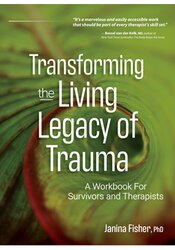Waking Up The “Thinking Brain”
Expert Advice + Free CE

The prefrontal cortex, our thinking and perceiving brain, is theoretically designed to hold the “veto power” over the amygdala. If a stimulus is recognized as benign, the amygdala is not supposed to respond. But when something might be threatening, the amygdala stimulates the brain to turn on the sympathetic nervous system, initiating an adrenaline stress response that prepares the body to fight or flee.
Adrenaline causes an increase in heart rate and respiration, maximizing oxygen flow to our muscles and turning off other non-essential systems, including the prefrontal cortex. We are now in survival mode, where pausing to think might waste precious seconds of response time. But the price we pay for the automatic engagement of our instinctive defenses is a high one. We lose the ability for conscious decision making, and we lose the ability to bear witness to the entirety of the experience. We act and react automatically by crying for help, freezing in fear, fleeing, fighting, or giving in when there is no other way out.
Some unexpected and unnoticed trigger evokes alarm, and our bodies suddenly brace or startle. Our hearts begin to pound. Simultaneously, the prefrontal cortex goes offline, making it difficult to think but easier to respond quickly and instinctively if we really are in in danger. Without a thinking brain, we cannot step back and assess the situation or ponder the best alternative. There is no time to think in an emergency situation. Instinct is always better and faster when immediate survival is at stake, but once the threat is over, we need mindful awareness and the ability to think in order to heal from the traumatic past.
That, however, is made difficult by the fact that the brain and body continue to respond to everyday life as if we were in danger. Years later, even when our worlds are safe, the same emergency responses are activated whenever some trigger sets off this internal alarm system.
When such experiences happen daily, trauma survivors feel overwhelmed and confused. They wonder, “Why am I so angry? So fearful? So ashamed?” And the most common conclusions they reach are either “There is something wrong with me” which makes them feel more ashamed, fearful of being found out, or defensive, or “There is something wrong with my home/job/friends/partner/way of life,” which usually increases anxiety, shame, or hopelessness. And the worse we feel, of course, the more impulsive we become.
The triggers, as well as the automatic conclusions we reach, deactivate the thinking brain, leaving us to act on instinct. The desperate impulse to find quick relief, coupled with the loss of ability to judge the consequences of our behavior, invariably exposes individuals to further danger or becomes an increasingly vicious circle.
To treat traumatic memories, we have to “wake up” the thinking brain. Once the prefrontal cortex is engaged, we can better help clients overcome their trauma. Watch this short video for my simple ways of “waking up” the prefrontal cortex.
To learn more about how to help your clients transform the living legacy of trauma, join internationally recognized trauma expert, Dr. Janina Fisher, in this FREE 1-hour CE training.
*This is an adapted excerpt from Transforming the Living Legacy of Trauma by Janina Fisher. Copyright © 2021, Janina Fisher. PESI Publishing & Media.
Adrenaline causes an increase in heart rate and respiration, maximizing oxygen flow to our muscles and turning off other non-essential systems, including the prefrontal cortex. We are now in survival mode, where pausing to think might waste precious seconds of response time. But the price we pay for the automatic engagement of our instinctive defenses is a high one. We lose the ability for conscious decision making, and we lose the ability to bear witness to the entirety of the experience. We act and react automatically by crying for help, freezing in fear, fleeing, fighting, or giving in when there is no other way out.
Some unexpected and unnoticed trigger evokes alarm, and our bodies suddenly brace or startle. Our hearts begin to pound. Simultaneously, the prefrontal cortex goes offline, making it difficult to think but easier to respond quickly and instinctively if we really are in in danger. Without a thinking brain, we cannot step back and assess the situation or ponder the best alternative. There is no time to think in an emergency situation. Instinct is always better and faster when immediate survival is at stake, but once the threat is over, we need mindful awareness and the ability to think in order to heal from the traumatic past.
That, however, is made difficult by the fact that the brain and body continue to respond to everyday life as if we were in danger. Years later, even when our worlds are safe, the same emergency responses are activated whenever some trigger sets off this internal alarm system.
When such experiences happen daily, trauma survivors feel overwhelmed and confused. They wonder, “Why am I so angry? So fearful? So ashamed?” And the most common conclusions they reach are either “There is something wrong with me” which makes them feel more ashamed, fearful of being found out, or defensive, or “There is something wrong with my home/job/friends/partner/way of life,” which usually increases anxiety, shame, or hopelessness. And the worse we feel, of course, the more impulsive we become.
The triggers, as well as the automatic conclusions we reach, deactivate the thinking brain, leaving us to act on instinct. The desperate impulse to find quick relief, coupled with the loss of ability to judge the consequences of our behavior, invariably exposes individuals to further danger or becomes an increasingly vicious circle.
To treat traumatic memories, we have to “wake up” the thinking brain. Once the prefrontal cortex is engaged, we can better help clients overcome their trauma. Watch this short video for my simple ways of “waking up” the prefrontal cortex.
To learn more about how to help your clients transform the living legacy of trauma, join internationally recognized trauma expert, Dr. Janina Fisher, in this FREE 1-hour CE training.
*This is an adapted excerpt from Transforming the Living Legacy of Trauma by Janina Fisher. Copyright © 2021, Janina Fisher. PESI Publishing & Media.
Transform traumatic experiences with this...

Dr. Janina Fisher, international expert on trauma, has spent over 40 years working with survivors, helping them to navigate the healing journey.
In Transforming the Living Legacy of Trauma, Janina shows how the legacy of symptoms helped them survive and offers:
Transforming the Living Legacy of Trauma is a workbook and guide to the journey to healing. As a ‘guidebook,’ it describes the terrain to be explored, and it provides maps to help travelers find the best routes to a life beyond trauma. Get your copy on Amazon today!
In Transforming the Living Legacy of Trauma, Janina shows how the legacy of symptoms helped them survive and offers:
- Step-by-step strategies that can be used on their own or in collaboration with a therapist
- Simple diagrams that make sense of the confusing feelings and physical reactions survivors experience
- Worksheets to practice the skills that bring relief and ultimately healing
Transforming the Living Legacy of Trauma is a workbook and guide to the journey to healing. As a ‘guidebook,’ it describes the terrain to be explored, and it provides maps to help travelers find the best routes to a life beyond trauma. Get your copy on Amazon today!
Meet the Expert:
Janina Fisher, Ph.D., is a licensed clinical psychologist and former instructor at The Trauma Center, a research and treatment center founded by Bessel van der Kolk. Known as an expert on the treatment of trauma, Dr. Fisher has also been treating individuals, couples and families since 1980.
She is past president of the New England Society for the Treatment of Trauma and Dissociation, an EMDR International Association Credit Provider, Assistant Educational Director of the Sensorimotor Psychotherapy Institute, and a former Instructor, Harvard Medical School. Dr. Fisher lectures and teaches nationally and internationally on topics related to the integration of the neurobiological research and newer trauma treatment paradigms into traditional therapeutic modalities.
She is co-author with Pat Ogden of Sensorimotor Psychotherapy: Interventions for Attachment and Trauma (2015) and author of Healing the Fragmented Selves of Trauma Survivors: Overcoming Internal Self-Alienation (2017) and the forthcoming book, Working with the Neurobiological Legacy of Trauma (in press).
Learn more about their educational products, including upcoming live seminars, by clicking here.
She is past president of the New England Society for the Treatment of Trauma and Dissociation, an EMDR International Association Credit Provider, Assistant Educational Director of the Sensorimotor Psychotherapy Institute, and a former Instructor, Harvard Medical School. Dr. Fisher lectures and teaches nationally and internationally on topics related to the integration of the neurobiological research and newer trauma treatment paradigms into traditional therapeutic modalities.
She is co-author with Pat Ogden of Sensorimotor Psychotherapy: Interventions for Attachment and Trauma (2015) and author of Healing the Fragmented Selves of Trauma Survivors: Overcoming Internal Self-Alienation (2017) and the forthcoming book, Working with the Neurobiological Legacy of Trauma (in press).
Learn more about their educational products, including upcoming live seminars, by clicking here.





